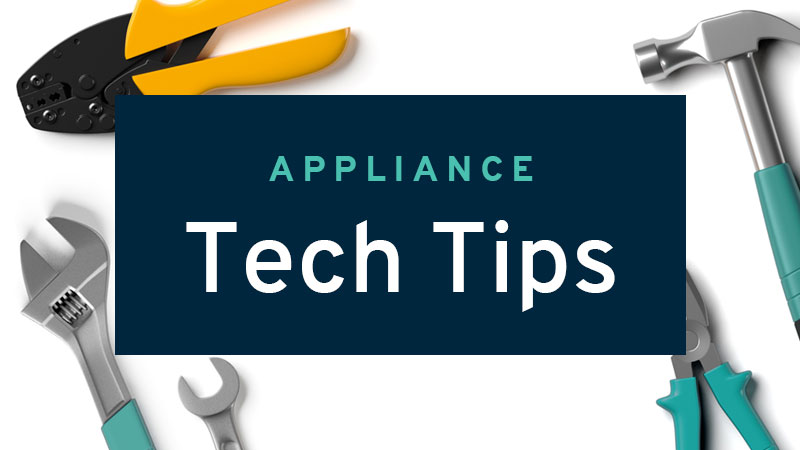How to Clean Refrigerator Condenser Coils
**NOTICE**
Due to the danger and complexity of electronic equipment repair, the following technical tip is intended for professional reference only. Please refer to manufacturer’s recommendations as Encompass does not guarantee the accuracy, reliability or safety of this information.
The modern refrigerator is a marvel of advanced and traditional technology. Developing the ability to keep food cold is one of the most important inventions of all time, so it can be devastating when the fridge stops working.
Sometimes a refrigerator will slowly stop cooling just enough because of dirty condenser coils. Condenser coils are part of the critical systems that maintain appropriate cold temperatures inside the fridge. When a layer of dust and household grime builds up on condenser coils, the system will overheat, preventing it from efficiently cooling the fridge or causing it to stop working.
Fortunately, cleaning condenser coils is not hard if you know what you’re doing and have the right supplies. Here’s a quick guide to cleaning refrigerator condenser coils and safely returning a fridge to tip-top condition.
Be Prepared to Repair
Know Your Condenser
Every refrigerator brand and model is a little different, but condensers for most are located underneath the fridge behind a kick plate cover or grate. To confirm, consult the refrigerator’s owner’s manual or parts guide, which can be easily found online if you no longer have the documentation. (Encompass posts schematics for most refrigerator models on its site.)
Collect Supplies
This is a fairly simple repair that doesn’t require many supplies. Here is a list of suggested items:
- Work Gloves
- Screwdriver
- Soft Bristle Brush
- Vacuum with Edging Attachment
- Shop Towels
- Heavy Duty Sponge
- Dish Soap
Getting Started
- Unplug Fridge Power Cable
This is for your own safety; food will be fine for half an hour while the fridge door stays closed. Disconnecting the fridge from power will prevent shock and electrocution while cleaning the coils. - Remove Condenser Cover
In most cases, the cover will be located along the bottom of the front of the fridge. Check to see if it is screwed in or clipped to determine the tools and approach you will need to pop the cover open and access the condenser coils inside. - Clean Cover
Over time, it’s natural for the cover to get saturated with grease, spills and floor grime. Be sure to scrub it clean in the sink with soap and water or at least use a damp rag to remove as much build up as possible. At least moderately cleaning the cover is important to maintaining clean condenser coils and promoting healthy airflow through the fridge components. - Straighten Any Bent Fins
If the condenser coil fans have been knocked significantly out of place, try straightening any bent fan blades. This can noticeably improve performance of the condenser and fridge. However, only bend a piece of the fridge’s inner workings if you are confident about what you’re doing and the fridge is unplugged.
Cleaning the Fridge Condenser Coils
- Brush Away Lint
With a soft-bristled cleaning brush, very gently sweep off the condenser coils to clear away dirt, dust and hair and other grime. The brush should be effective enough, but use a vacuum if necessary. - Vacuum With Soft Brush Attachment
Start with a soft brush attachment and gently sweep over the coils again, this time with the help of suction. Carefully move the vacuum head back and forth over the coils, paying special attention to crevices and spaces for extra dust to build up. Next, switch to the precision corner attachment. Use this to remove any remaining specs of dust or grime that might be insulating the coils from being kept cool. - Reattach Cover
With the coils clean, replace the cover in the same way it was removed.
Testing Results
- Plug in Fridge
Turn the fridge back on, and let it start cooling. The true test of a working condenser coil is when the fridge stays icy cold over several hours throughout the day, so check back in from time to time. - Use Small Shelf Thermometer
The best way to identify problems with a fridge’s coolness level is to regularly monitor the temperature with a simple clip-in fridge thermometer. If you notice any changes, you can immediately start troubleshooting before a possible minor problem becomes major.
Special thanks to Fred’s Appliance Academy for this helpful tip!



